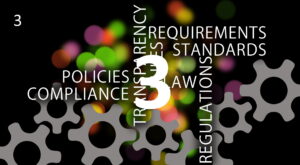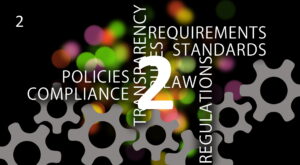Lean PPM – step 15: Prioritization on strategic level at Digitec Galaxus AG – the starting point
There are many blogs about prioritization. Most of them criticize the typical current state in prioritization: The loudest voice in the room or the HIPPO (highest paid person in organization) wins the emotional fight for resources and budget (annotation: in this case I do not write “her”, playing the voice and HIPPO game is more a man’s world). Some blogs give positive advice: prioritization based on business value and cost of delay. Unluckily most of them leave you alone when it comes to the interesting point: What is business value!?
Our starting situation in prioritization
When we introduced our Kanban System of initiatives at Digitec Galaxus AG we knew that we have to (should, strive to, …) prioritize on a strategic level. We knew that we had to find some means to structure the discussion about priority of the initiatives in our strategic Kanban board. As in other companies an often heard argument in discussion was: “I have the strong feeling that we urgently shall do A”.
Although in general the discussion in this round are positive and constructive – I personally had a bad feeling in these discussions because of the following issues:
- Prioritization often took place on comparison of two initiatives against each other. That might work for comparable initiatives. It is a lot harder if one initiatives implement an innovative customer feature and the other initiatives addresses cost savings through automation. In this case a one by one comparison fails. In this case a strategic alignment is required for decision.
- Arguments in discussion very often addressed what we gain, if we do X. Outcome of this type of discussion is typically that we see a gain in many things – in too many things. This leads into the trap to overload the truck, to neglect WIP limits and to start too many things in parallel.
- Very seldom we discussed what we will stop or shall explicitly delay and what we loose if we stop or delay a specific initiative. In my perception this is the most important discussion that has to take place on a strategic level: What to stop, not to start, where to focus consequently.
Additional I discovered that the decisions taken in the Innovation Board Meeting lead to substantial subsequent discussions in the teams involved in the development process – from functional departments to engineering throughout all participating persons representing all types of roles. This is a very important finding. The reason for these discussions I encounter in a communication gap between the Innovation Board members and the teams carrying out the decisions. Teams implementing the strategy require more information and background about priority decisions then just “the executive team decided A is more important than B”. The “Why” is as important as the decision itself.
To summarize our current state:
- The discussion about priority missed concrete arguments. Arguments are more emotional than fact based.
- The attendees (our executive team) try to push too much work into the system. Reason is that there is a value in every single initiative. So it is hard to say NO if there are no facts beside emotional arguments. This “push” factor must be eliminated.
- Acceptance of the outcome of prioritization need to be improved. The information gap between the decision board and the development teams ended in many subsequent discussions. The communication and transparency of decision down to all involved persons need to be improved.
At this point we decided to improve the prioritization mechanism used for our initiatives representing the most abstract level of items in our strategic portfolio.
The Digitec Galaxus basics of prioritization
As starting point, we consulted different concepts of prioritization beginning with classical approaches like the requirements prioritization matrix by Wiegers (see https://www.processimpact.com/articles/prioritizing.html) to modern approaches following the cost of delay approach and weighted shortest job first idea from Reinersten (The Principles of Product Development Flow; Donald G. Reinersten; ISBN-13: 978-1935401001, https://www.leanproductflow.com/) as used in the scaled agile framework SAFe.
We decided to follow the weighted shortest job first (WSJF) approach adapted to the needs of Digitec Galaxus. We see this approach as the optimal approach for a company competing based on market driven requirements in the fast growing customer focused e-commerce market. What convinced us to base on WSJF was the “what do we loose if we do not implement X” mindset. This mindset leads to a real business value driven perspective in prioritization and to positive and fruitful discussions about what business value really is. To remind you on the theory behind WSJF, here is the principle:

The image shows a very simple principle: Calculate the delay costs for X over time, if you do NOT change the status of X. Examples for delay costs are missed profit, running maintenance costs, even lost reputation on the market or whatever you treat as costs of delay.
Then prioritize all items based on the WSJF value as WSJF = cost of delay / time. If you as organization decide to always pull the item X first with the highest WSJF factor, you maximize the benefit for your organization because you minimize the delay costs. Or in other words: You decide NOT to development items that have a lower negative impact on your profit than the ones with the highest WSJF factor.
SAFe as well gives advice to calculate cost of delay as following:
- Cost of Delay = Business Value + Time Criticality Factor + Risk Reduction – Opportunity Enablement
This formula is hard stuff. No matter what organization you look at, at least the two factors “business value” and “opportunity enablement” are as transparent as a massive wall of bricks.
Nevertheless, we decided to go into this direction. Point is that any other theory about prioritization finally comes to the very same discussion: how to define business value. To be more precise, we decided to define all influencing factors on the right side of the cost of delay formula under the context of Digitec Galaxus.
See my next blog for the concrete discussion of the Cost of Delay factors Business Value, Time Criticality Factor, Risk Reduction and Opportunity Enablement.
Summary
I want to summarize the findings in this blog
- In many organizations the HIPPO or loudest voice prioritization is applied. Reason is the lack of a transparent, easy to understand and use prioritization system of items in a strategic portfolio.
- Even HIPPO or loudest voice prioritization may end in good results. The next problem then is to communicate these decisions to the teams that carry out the impact of prioritization. A HIPPO or loudest voice prioritization is nearly impossible to communicate. Distracting discussions and inefficiency in executing are the result of missing communication.
- Instead of comparing items based on the mindest “what item does generate the higher profit”, prioritization must be based on the mindset “What item does generate the highest cost if we delay the implementation”. This approach at is a good start at least for all companies competing in market driven environments.
- To quantify Cost of Delay is not easy as the factor Business Value, Time Criticality Factor, Risk Reduction and Opportunity Enablement are subject of hard discussions. To define a (for everybody) transparent, easy to understand and use definition for these factor is crucial for a Cost of Delay prioritization.


